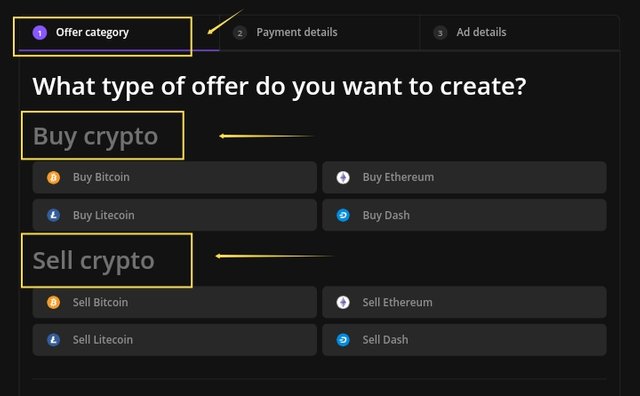Crypto Academy / Season 3 / Week 1 - Homework Post for professor @sapwood
Introduction
A non-custodial marketplace is a type of decentralized platform that provides its user with absolute control and high security over assets they own. Unlike, centralized p2p platforms the non-custodial p2p market allows the possibility of platform users to transact without reliance on external parties, except in a case of disagreement between the seller and buyer. This is achieved by the adoption of escrow services.
Non-custodial wallets use smart contracts usually established between the buyer and the seller in the form of encrypted agreements to manage the activities of the transaction.
The smart contract is designed to transact using on-chain escrow thus, performing transactions within a block. Transactions are usually fast after an agreement between the buyer and seller and member's ledger is updated on the success of a transaction.
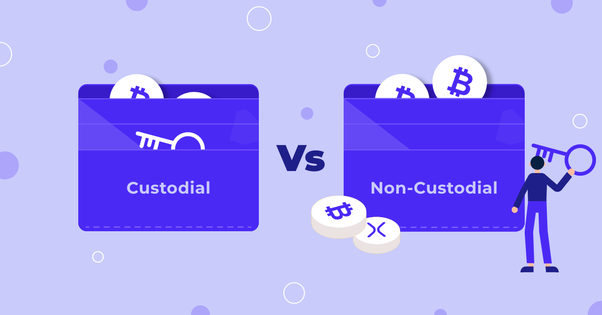
Image Source
Localcryptos Exchange Niche and Setup
Localcryptos is a widely used non-custodial crypto wallets, having the feature of full owner control right, in accordance access key(private) is issued to the user and sensitive pieces of information are not required while registering.
This non-custodial wallet can be used in two ways, a crypto-crypto transaction and a crypto-fiat transaction.
The crypto-fiat options a wide range of fiat currency payment methods, in numeration is about 40+.
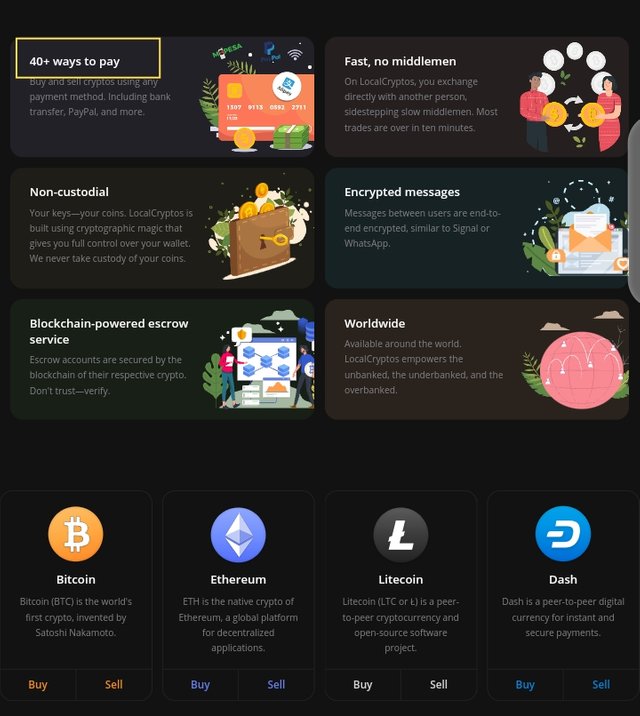
Setting up a niche:-
a) The first step is to access the wallet through their official website sign-up page Localcryptos.com/signup
b) Next, choose the account type. Localcryptos has two account types:
- Normal account - only requires your email address.
- External wallet account -requires an external ethereum wallet address.
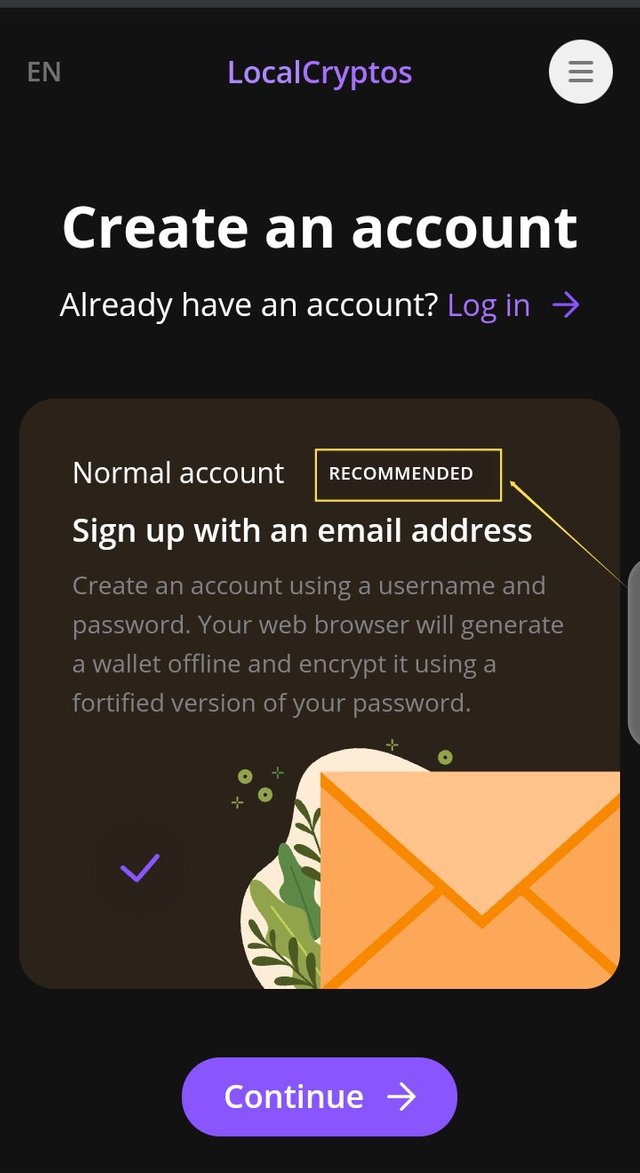
Note that it is recommended to use the normal account to enable users to take full advantage of the non-custodial platform (which includes using other Cryptocurrency available).
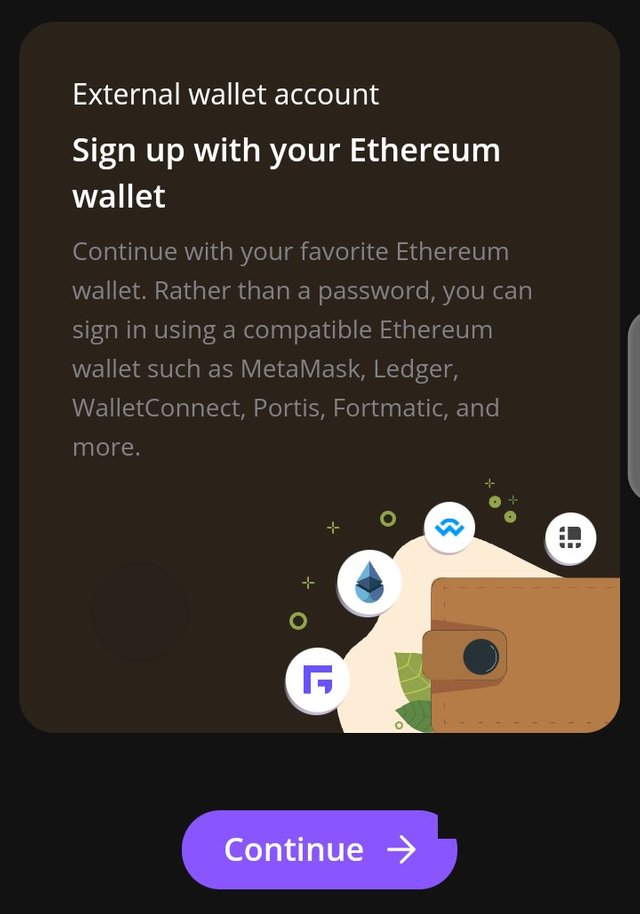
c) Fill in the required information, in this case, username, email address, and passwords. Click continue.
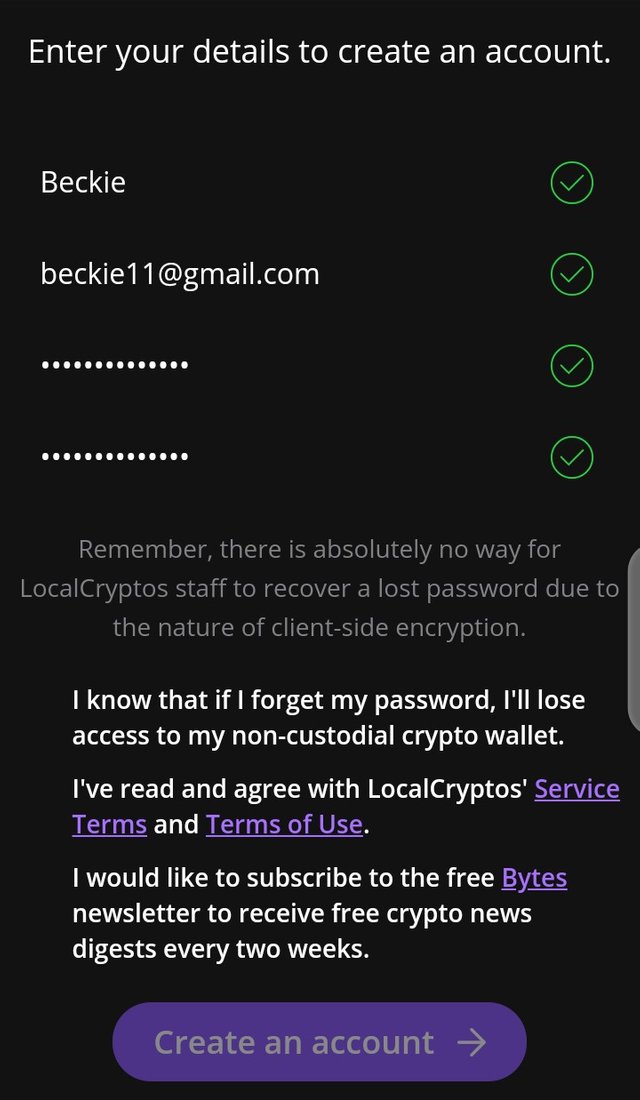
d) If keyed-in details are correct, and captcha verified, you'll be logged in after email verification is done, fully ready to use the medium for transactions at will.
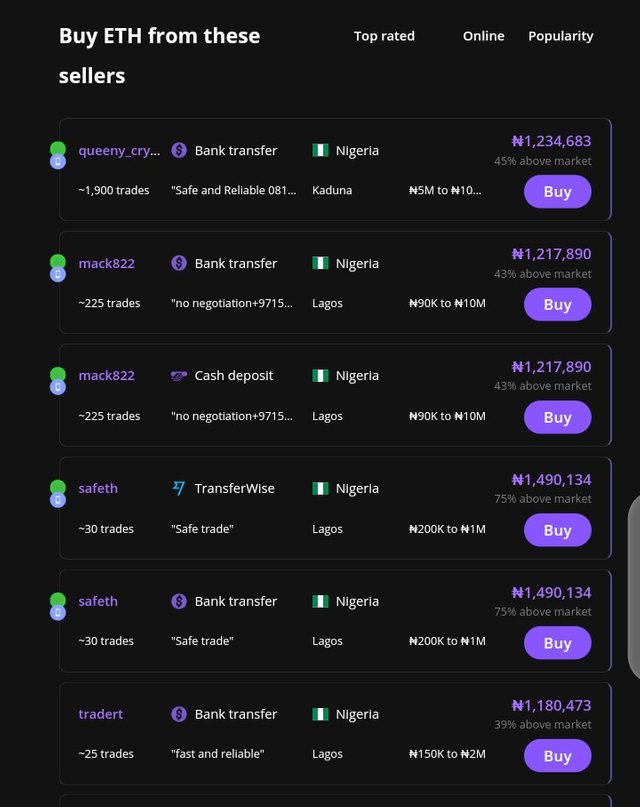
Indicate your non-custodial wallets (BTC, ETH. LTC, DASH) in Localcryptos?
Source
There are four available wallets on the Localcryptos platform, BTC, ETH, LTC, and DASH. Each wallet has a unique address and an access key(private) to initiate transactions. To access the wallets available on the Localcryptos platform,
Click on the wallets option.
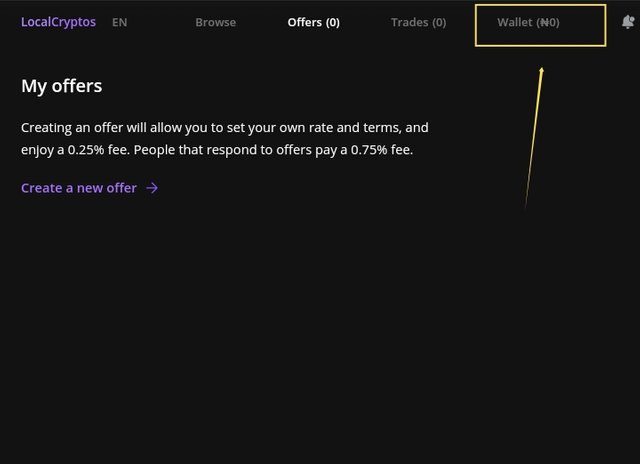
This opens the wallet menu, from where you can access each wallet and its functionalities.
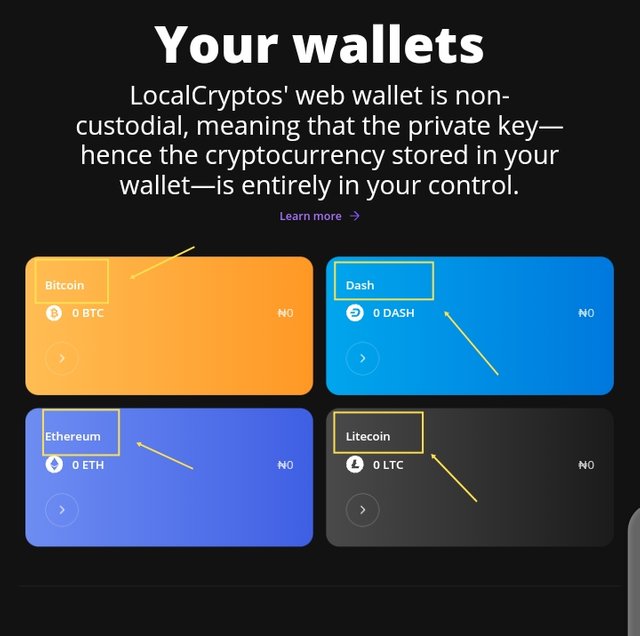
Choosing any of the wallets displays information about the wallet.
Access key(private)
These are set of generic character generated automatically, it is used to initiate transactions and ensure the encryption throughout the entire process.
This means that the user has sole control of the wallet, no external party can initiate or stop a transaction, except in a case of disagreement between buyer and seller.
To access the keys, you have to access the wallet. Click on the wallet of choice (BTC, ETH, LTC, DASH).
The basic information of the account will be displayed. On the right is the wallet address (which is a unique identifier for the wallet) and on the left, available balance and transaction field.
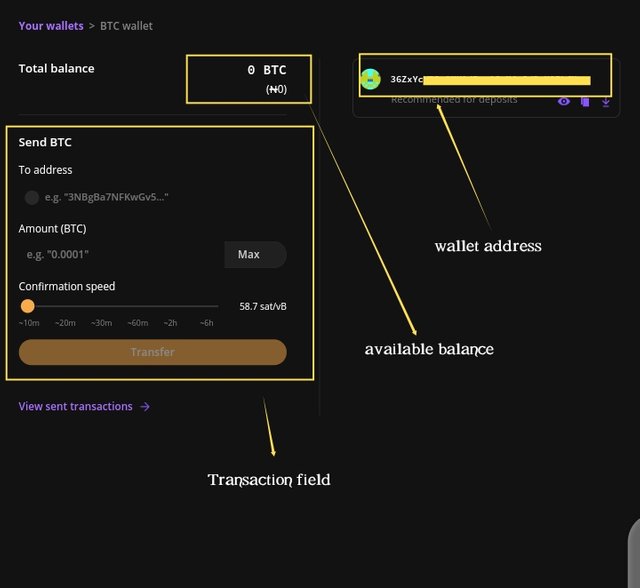
The Access key(private) is meant to be kept private as the name implies, it's best advised to export the key and keep an offline copy in drives, ledgers, printed copies as no means of recovery is available.
To see the key, click the download icon below the wallet address and export the key.
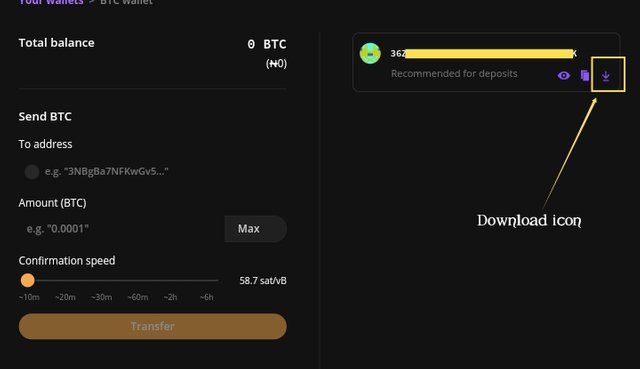
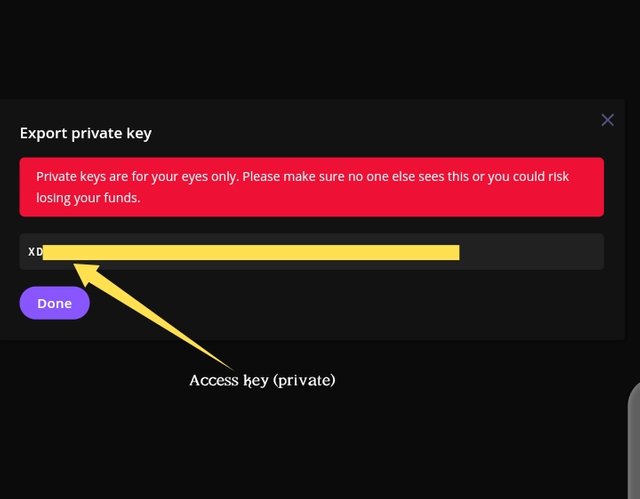
Then to export the key, click on the wallet tab, and select the backup wallet option.
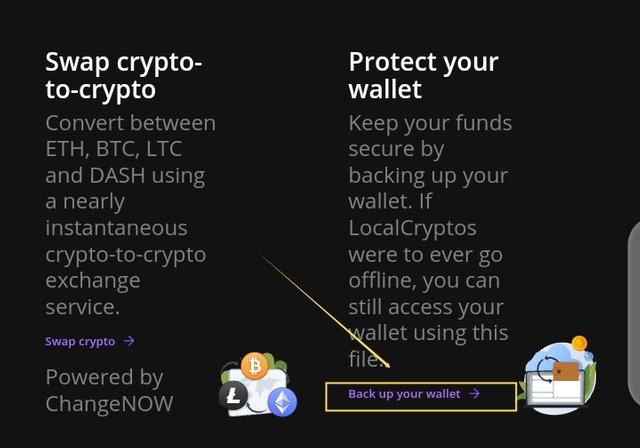
This displays the summary of the account, and download wallet backup option.
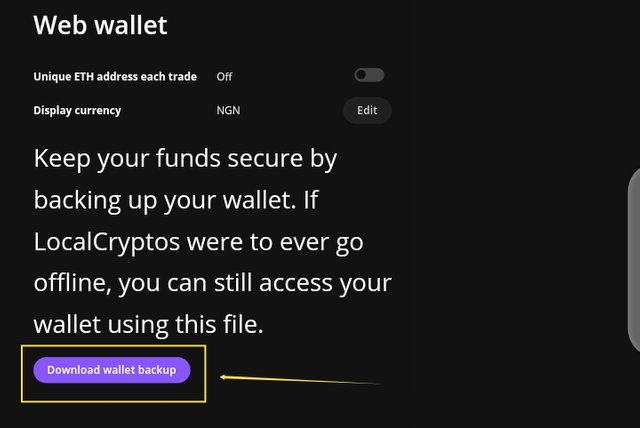
If the download link is clicked a text file (JSON) is download. It is recommended to print a hard copy, store the key in an offline ledger, and possibly handwritten document.
Re-importing a non-custodial wallet
Localcryptos wallet can be imported in other wallets using the private key of the wallet being imported (ETH private key). The decentralized and non-custodial nature of the wallet allows full control of the wallet by the user thus, permit freedom to move the wallet to similar platforms.
Note that if the private key is exposed then it is useless because the content of the wallet can be tampered with at any point.
Crypto - Fiat Option
Localcryptos wallet has over 40+ payment methods for the four crypto commodity available (BTC, ETH, LTC, DASH). The fiat payment option includes Bank transfer, Cash deposit, International wire, Western union, etc.
From my observations, the fiat option available may be dependent on your location.
--for example, I live in Nigeria, the locally available options are bank transfer, cash deposit, cash.
International options include Western Union, MoneyGram, international wire, etc, chipper cash, MTN mobile money, TransferWise, AdvCash.
With restrictions on payment channels like Skrill, PayPal, Venmo.
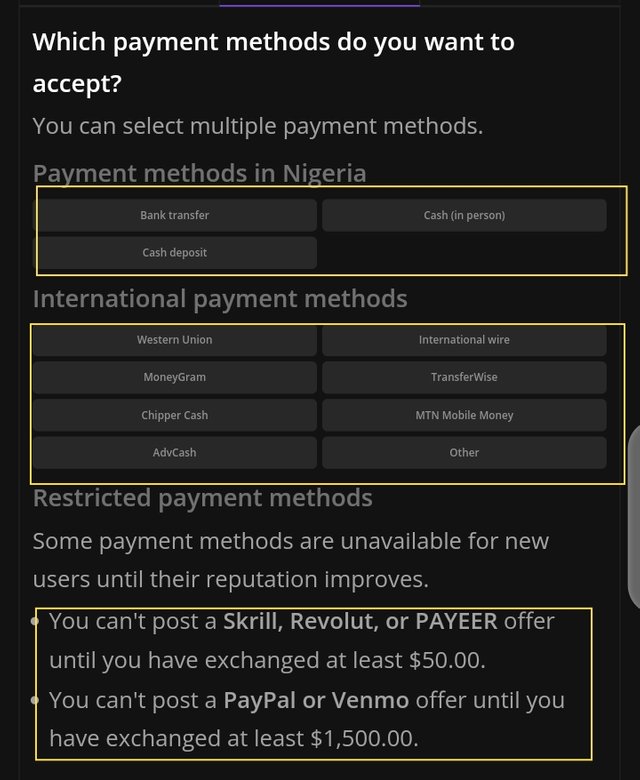
How Secure is Localcryptos as a non-custodial p2p market?
Localcryptos wallet is very secured because it is decentralized, encrypted and only permits the owner of the account full access. But it is important to highlight that the level of Security depends on how careful the user is with the private key, and login password. Any form of compromise to the aforementioned keys can cause severe damage to the account (in an event of theft).
on-chain escrow services
One of the key features of a non-custodial wallet is the use of an on-chain escrow service. This forms the base of the security of the system, and only permits transactions within the same block, unlike off-chain that match across blocks.
Escrow service present is in form of smart contracts. A smart contract is a form of encrypted agreement generated between the buyer and seller, which contains details of the transactions.
Communication via encrypted chat is established between the buyer and seller, and upon agreement, the transaction is done.
In contrast to this situation, when the buyer or seller fails to meet the required terms or total disagreement, a third party(attributor) steps in to resolve the issue with the evidence provided by the parties involved.
On-chain transactions allow fast secured (encrypted) transactions since the operation is carried out within one block (node).
Market Maker
Market markers are active users that either sell or buy assets. In the case of a non-custodial marketplace, they serve as primary liquidity providers. The determine terms of the transaction like price, payment type, duration of the transaction (in some cases).
Generally, anyone using the platform can be a market maker as the volume depends on them to push prices and maintenance of the system (through transaction fees).
Creating offer
a) To create an offer, click on offers.
b) Then click on create a new offer.
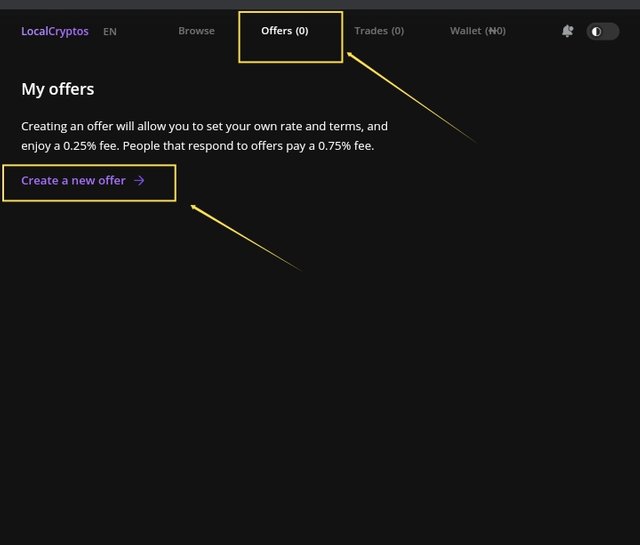
c) Next step is to indicate the type of offer from the offer category.
You can either create a buy or sell offer on any of the listed assets.
d) Next you indicate the location to be displayed in the offer, and the Currency you would like to trade-in.
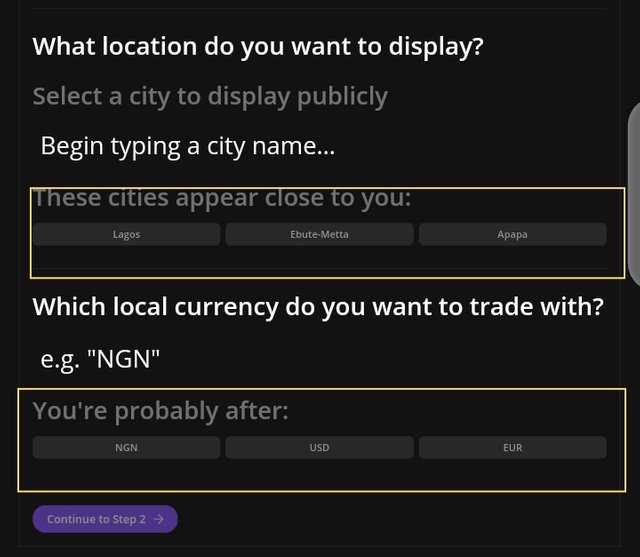
e) Choose a payment method from the available options.
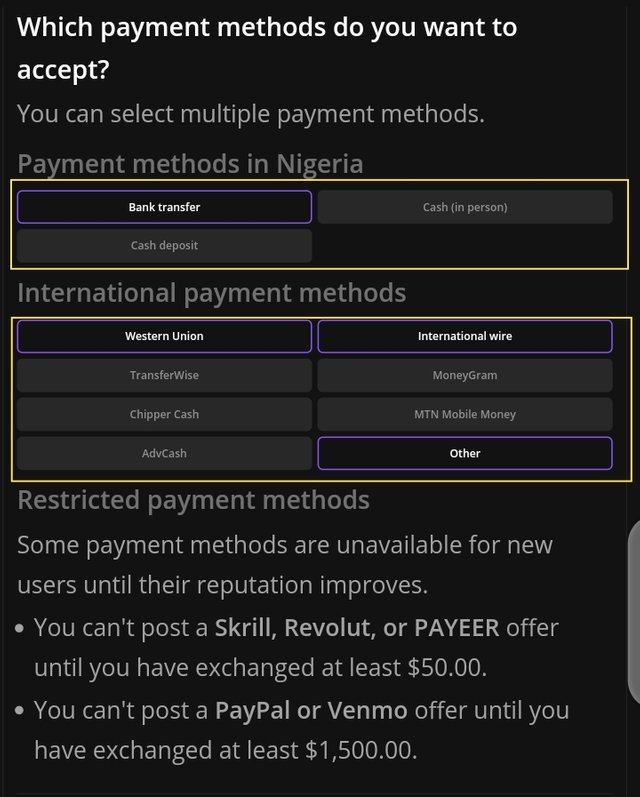
f) Next choose the type of rate to use.
- Dynamic rates -this is from an average of price calculated from the liquidity of a known exchange in percentage either above or below the price.
- Custom equations rate -This is manually calculated and set from the average price from different exchanges.
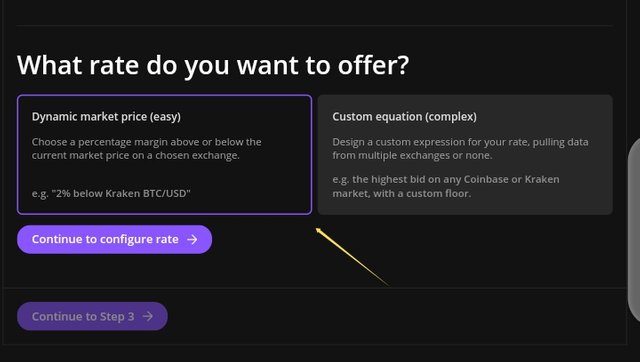
g) Next choose the configuration for the dynamic rate(in percentage) either above or below the price.
And also reference exchange.
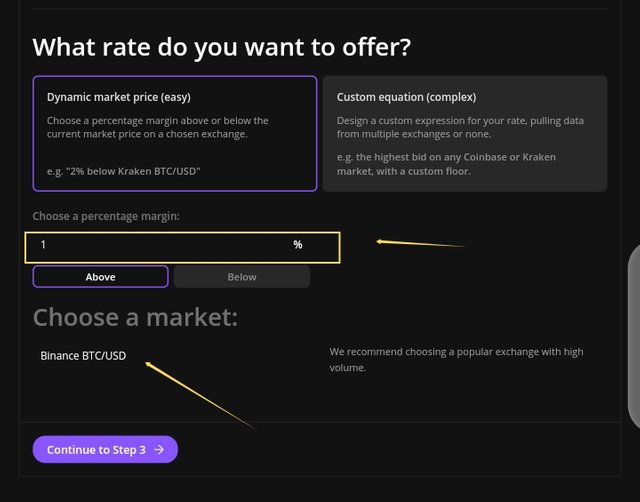
h) Next choose title to be published.
I) Fill in terms of the offer.
j). Set the offer limit.
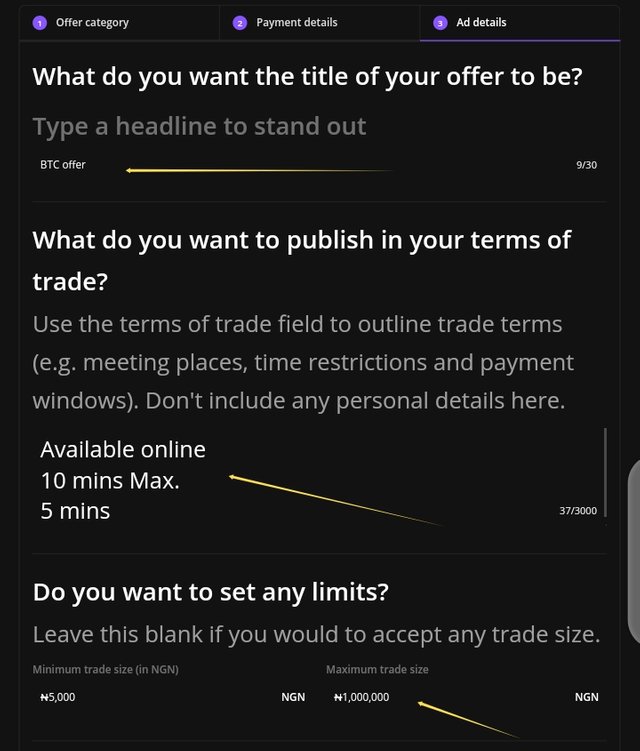
k) Set Time zone
l) set available hours (preferably business hours)
m) Set Customer restrictions
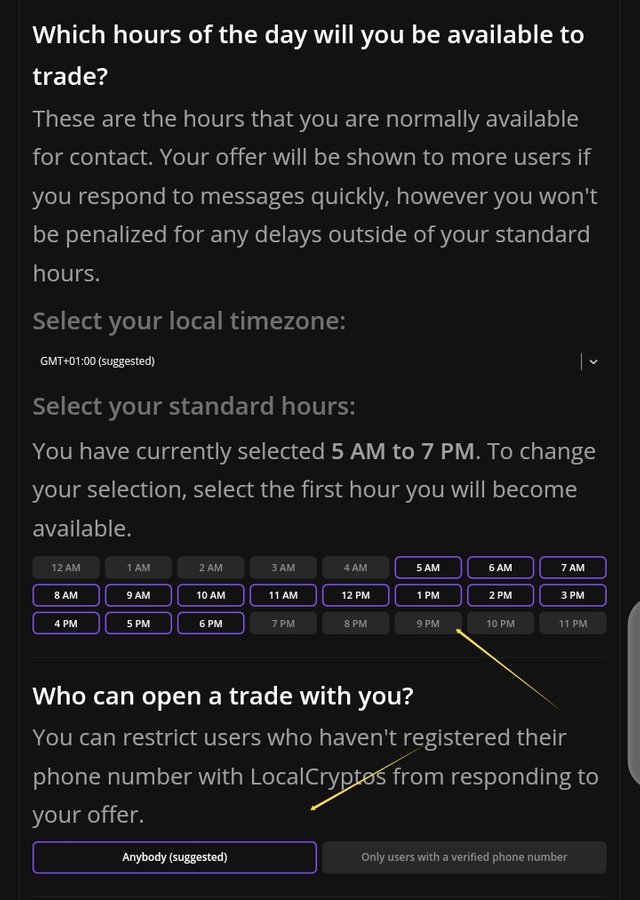
n) Set Customer location (recommended for easy access and security)
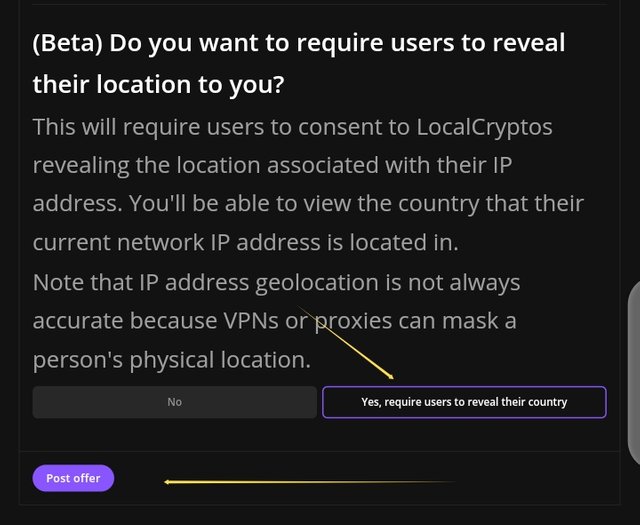
Lastly, click post offer, the offer will be posted on the explore tab for other users to see the offer.
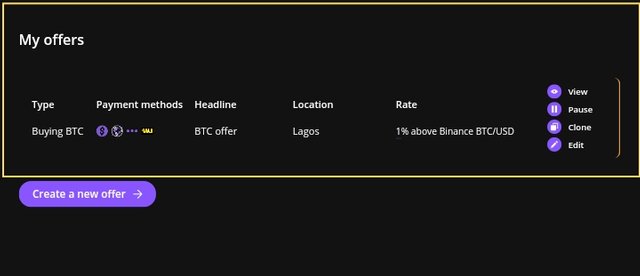
Conclusion
Non-custodial p2p marketplace provides an astounding level of privacy and security with layers of encryption. The adoption of on-chain escrow creates an encrypted channel for communication and transaction between users.
There are limitations:
- Limited assets to trade(crypto)
- Generally low liquidity, as it depends on users within the same block.
- Risk of misusing private key.
Thank you professor @sapwood.

